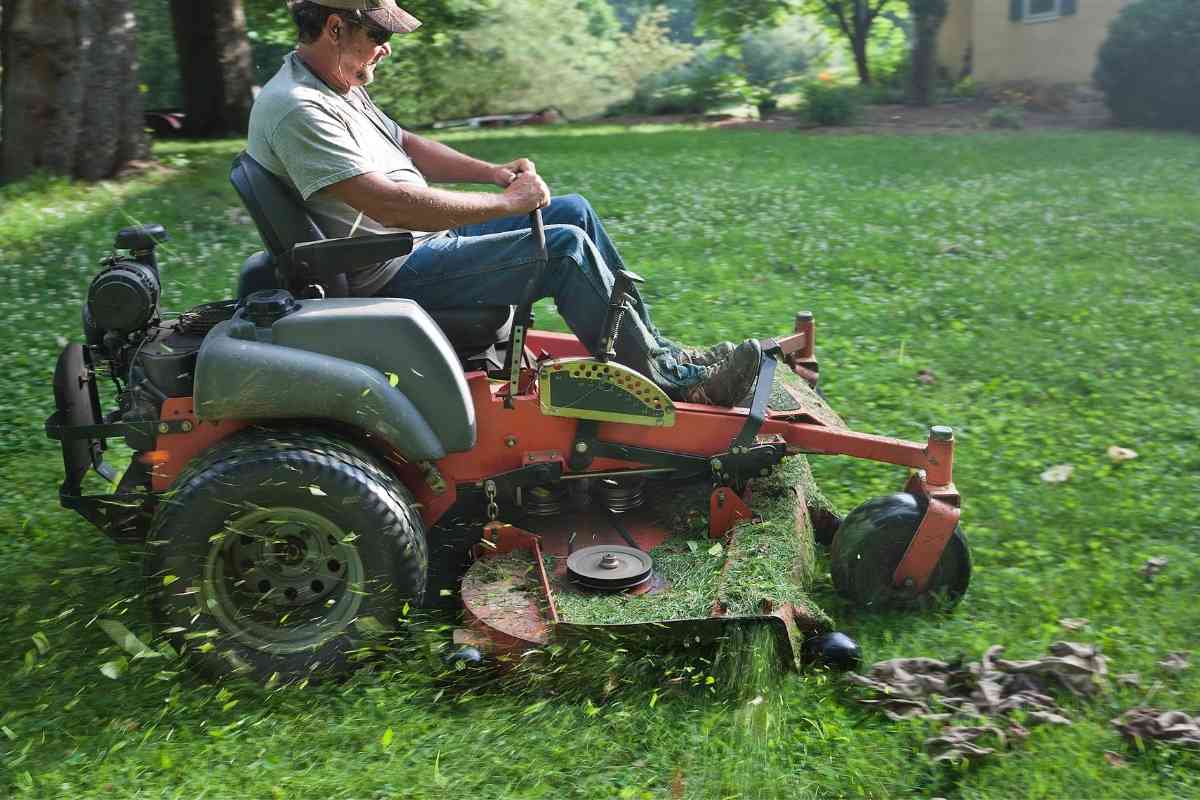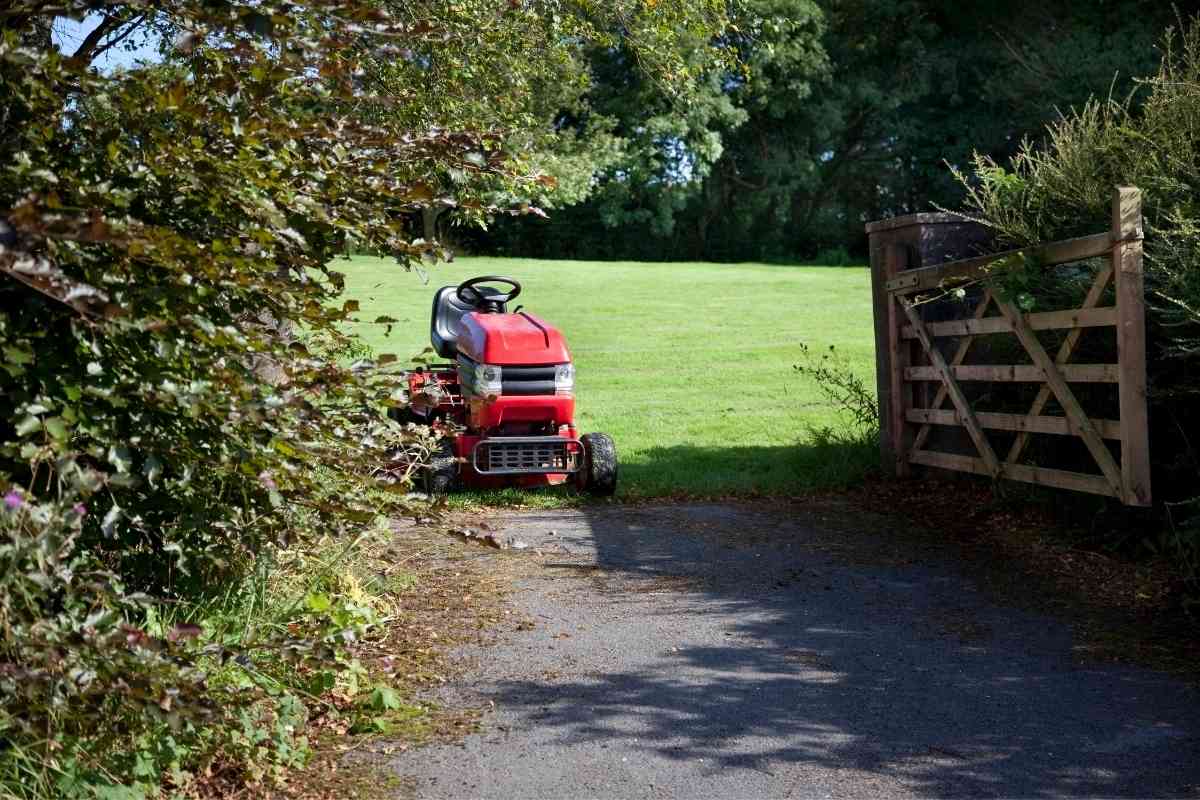Will A Riding Lawn Mower Fit In A Pickup Truck? 6 Easy Steps!
Transporting a riding lawn mower in a pickup truck can be challenging; our guide, “Will A Riding Lawn Mower Fit In A Pickup Truck?” simplifies the process with six easy steps. Follow our easy, step-by-step instructions to ensure your mower fits safely and securely for transport.

We all love our lawn mowers because they help us trim the yard. However, if you own a riding mower, planning is required before moving it.
You have to plan since riding mowers are bigger and heavier. Therefore, you cannot easily lift them and put them on the bed of your pickup truck.

“Drive Past Myths: Get the Real Deal on Car Buying!”
🚘 Uncover 13 Car Buying Misconceptions with Our FREE Newsletter!
Plus you will get our quick tips, expert advice, and myth-busting insights delivered straight to your inbox.
Subscribe now and make informed decisions without the detours.
“Experts Hate This! Learn the Car Buying Secrets They Don’t Want You to Know. Free Subscription!”
You also need to know whether the truck you plan to use will fit the mower. Ensure you get all the necessary tools and equipment to place the mower in a pickup truck. So, will a riding mower fit in a pickup truck?
Will A Riding Lawn Mower Fit In A Pickup Truck?
A riding mower can fit in the back of a pickup truck. Most riding lawn mowers are less than 6 feet 8 inches in length and thus can fit on the back of any long-bed pickup truck.
You must ensure it will fit by measuring the dimensions of both your truck and the riding mower.
Measuring ensures that the riding mower will not only fit but do so and have a bit of wiggle room to secure it to the truck.
If you find out that the back of your pickup truck is not large enough to fit the riding mower, you may need to find different transportation for your riding mower, for example, a cargo haul truck.
While moving and transporting a riding lawn mower may not be as easy as a push mower, especially over considerable distances, it does not have to be a strenuous endeavor. After figuring out if the back of your pickup truck will fit a riding mower, you must ensure that you load the mower correctly.
Continue reading below and learn how to load your riding mower in a pickup truck correctly.
6 Steps For Loading A Riding Mower
Any owner looking to move their riding mower should ensure that they do it properly. Doing this will make the whole moving process a lot simpler, faster, and more efficient; not to mention, the mower will not get damaged during the moving process.
First, you need to know whether or not your pickup truck is large enough. As stated above, you must be sure whether a riding mower will fit in a pickup truck.
Measure your truck’s and mower’s dimensions to be sure before doing anything else, like buying equipment for loading the mower in a pickup.
We have all seen clips and videos of botched attempts to load riding mowers in trucks, and while some might be funny, in most cases, they can lead to personal injury, damage to the truck or mower, or even both.
So, how do you load your riding mower onto a pickup truck? Here are the proper steps to follow to load a riding mower onto a pickup truck correctly.
Step #1 – Choosing a ramp

First and foremost, part your pickup truck facing a bit of an incline if you do not have a flat surface. This is the best way of reducing the loading angle’s steepness by moving up the feet of your ramp of choice.
Like is the process when loading anything onto a truck, ensure the truck is in the park position and parking brakes are applied to restrict any movement from the truck while loading the mower. Following this, you have to lower the truck’s tailgate (if your truck has the option to do so).
Below are tips for ramps to use for adequately loading a riding mower.
Ramps Choices When Loading a Riding Mower In a Pickup Truck
You can use a selection of ramps to load things, including a riding mower to your pickup truck’s bed. These include wood ramps, arched ramps, and straight ramps. Here is what you need to know about each type and when it is advisable to use them:
- Arched Ramps: All mowers, including push mowers, tractor mowers, and riding mowers, have low ground clearance. This is so due to the cutting deck of the mower. The low ground clearance can be a problem, especially when the mower is close to the tops of the ramp since its center of gravity is raised. You may use a long ramp with an arc at the top to reduce the problem.
- Straight Ramps: Straight ramps are also an option when loading a mower onto a pickup. However, because of the steep incline of a truck, you should use long enough straight ramps to ride the mower over a gradually rising slope.
- Wooden Ramps: When using wood, please ensure it is wide enough. Also, make sure it is thick and strong enough to support the weight of the riding lawn mower you want to load onto a truck. Furthermore, you may also consider placing supports underneath the ramps to ensure they are strong enough for you to ride the mower on.
Step #2 – Placing The Ramps
Next, you have to unfold your ramps, ready to place them. Place the ramps’ plate ends or finger right at the tailgate edge of the pickup truck.
Almost all ramps usually come with their safety straps. If yours did not, or you lost them, please ensure you buy safety straps before even attempting to load the riding mower onto the truck. This is very important to ensure you can safely load the mower.
Since you are using a pickup truck, you should know how to secure the ramps using the safety straps properly.
For this, it is crucial to secure your ramps to the pickup truck by tying them to the truck’s bumper; ensure the truck you are using has steel bumpers. If you are planning to use a trailer, you have to fasten the ramps to the safety chain loops of the trailer hitch.
Please ensure that you secure the straps carefully and tightly onto your truck. Lack of doing will risk the ramps sliding when you drive your riding lawn mower on the ramp. This is very dangerous and can lead to injury, damaged equipment, or both.
Step #3 – Loading The Lawn Mower
After securing the ramp, it is time to start loading the riding mower. If you are confident with your driving skills and comfortable, you can load the mower in reverse. Loading in reverse is not necessary or mandatory.
However, doing so will ensure your pickup truck’s center of gravity is lowered and will not do a wheelie. This option is mainly for those who want to use a trailer rather than a truck. Nonetheless, if you are comfortable and can do it, it is better to do so even when loading your riding mower onto a pickup truck.
Step #4 – Momentum
Once you start riding the mower up the ramps, ensure that you engage a lower gear and never attempt to stop midway. This will make the loading process a lot easier and more efficient. However, whenever you must stop, do not do it midway; just let the mower roll back to the ground.
Doing this will give you the needed momentum whenever you try the next time. Without this momentum, you will not be able to clear the ramp to the top.
Step #5 – Parking Brakes
Once you get the riding mower onto the bed of the pickup truck, ensure you immediately put the parking brakes or the mower. Following this, you have to secure the mower using tie-down straps. More on how to secure your mower below.
Tips for Securing the Riding Mower to The Truck Using Tie-Down Straps
- Mowers cost money, more if they are riding lawn mowers. No one would like to hear their mower or equipment rattling at the back of the truck or see them fall off while driving. This is the risk if you do not securely tie down the riding mower to the truck bed after loading it.
- Ratchet straps are the best straps to tie down your mower to the truck bed. However, you may also safely use any other quality straps you can buy. Securing the mower well with quality straps means you do not have to worry when moving the equipment, especially when traveling at high speeds.
- Most people think of using one type of strap: bungee straps. Bungee straps can stretch and eventually snap, especially when they are older and overused. Even when they are new, we advise against using these straps since they are not suitable for moving large equipment which weighs a lot.
- Chains are another way of tying down the mower to the truck bed. The most important thing to remember here is that you must make sure whatever you use to tie down the mower to the pickup truck bed is rated to move the weight of your riding lawn mower. Also, ensure that the straps or material you use are new or have no damage that may affect its integrity.
Step #6 – Keep The Ramps!
This is more of a reminder than a step. Ensure you place the ramps into the truck. You can use them when you get to your destination and are ready to offload the riding mower from the pickup truck.
Is a Pickup Truck a Viable Option for Moving a Riding Mower?
We’ve answered the question “Will A Riding Lawn Mower Fit In A Pickup Truck?” But, we haven’t answered another questions. Are pickup trucks the best option for the job.
It is okay to use any reliable pickup truck to move your mower. Using a pickup is one of the accessible ways of moving the riding lawn mower.
However, to do it correctly, we advise you to get the right equipment and follow the proper load process outlined above for safety.
Prepare Your Riding Mower For Transport
Before you load your lawn mower, it’s important to remember that it’s not just carrying it. Will A Riding Lawn Mower Fit In A Pickup Truck? Yes. Can you just load it and go? No.
You cannot just load your riding mower onto the truck before preparing it to be transported. So, how do you prepare the mower? Here are a few tips to help you with that;
- Drain All Fluids in The Mower: You should do this if you will use a crane to load your mower onto a truck. However, if you will ride the mower to the truck via ramps, you can do this once it is inside your truck.
- Clean The Mower: Ensure the mower is clean before loading it. This is especially true if you have used it recently and did not clean it afterward. Doing this ensures the mower does not drag mud and dirt onto the truck’s bed.
- Remove Mower Attachments: Removing all blades and attachments to your mower is an excellent way to ensure they do not get damaged or cause any injuries when loading the mower.
Closing Thoughts
Many people ask “will a riding lawn mower fit in a pickup truck?” and with good reason. Riding lawn mowers are a great addition to any backyard, but transporting them is hard.
Our article gives you six easy steps to ensure that your riding lawn mower fits in your pickup truck, and that you load it safely. These include choosing the right ramp, securing your lawn mower, and other details that some people forget.
In the end, a pickup truck can do the job right, but you must take these steps to ensure that you do so safely.
